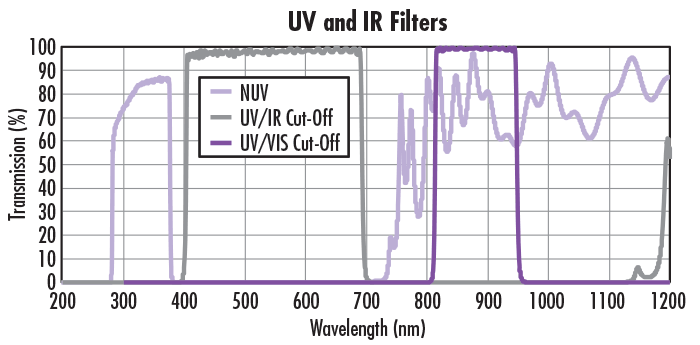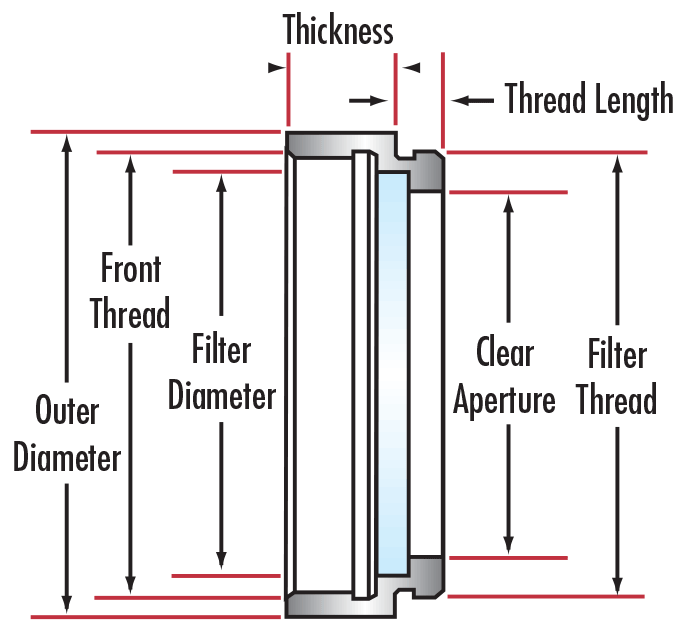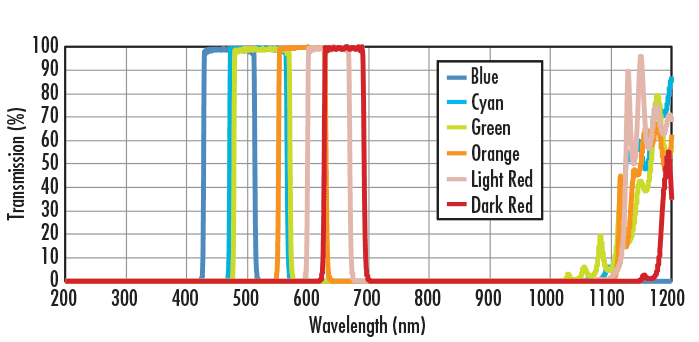
 TECHSPEC® components are designed, specified, or manufactured by Edmund Optics. Learn More
TECHSPEC® components are designed, specified, or manufactured by Edmund Optics. Learn More
TECHSPEC® High Performance Mounted Machine Vision Filters are designed and manufactured for the most demanding machine vision and imaging applications. These filters pass or block specific UV, visible, or IR wavelengths and provide extremely wide angles of incidence. Compared to traditional filters, these hard coated filters provide superior blocking of unwanted light and greater durability for longer lifetimes. TECHSPEC® High Performance Mounted Machine Vision Filters can be used to improve image contrast and isolate spectral regions and colors. These filters are offered in a variety of colors and filter thread sizes.



Edmund Optics® TECHSPEC® High Performance Machine Vision Filters are designed with the industry’s best performance to cost ratio in mind. With extremely sharp edge transition and flat peak transmission, users are guaranteed the optimal signal-to-noise ratio in their imaging system without losing light intensity that is critical for performance.
On average, the blocking range reaches far into the UV at 200nm and stretches out to 1200nm, which covers most of the noise and UV/IR signatures seen in conventional lamps and bulbs.
The graphs below demonstrate the performance typical to our Machine Vision Filters and other Hard Coated filters. The sharp cut-on and cut-off wavelengths are noticeably apparent, as well as transmission values that are >10% improved over traditional imaging filters on the market.



| Dimensions | |||||||
| Filter Thread | Outer Diameter (mm) | Front Thread (to allow for stacking) | Filter Diameter (mm) | Thickness (mm) | Thread Length (mm) | Clear Aperture CA (mm) | |
| M22.5 x 0.50 | 24.5 | M22.5 x 0.50 | 20.1 ±0.1 | 4.5 | 2.0 | 18.5 | |
| M25.5 x 0.50 | 27.5 | M25.5 x 0.50 | 23.0 ±0.1 | 4.5 | 2.0 | 21.5 | |
| M30.5 x 0.50 | 32.0 | M30.5 x 0.50 | 28.0 ±0.1 | 5.0 | 2.0 | 26.5 | |
| M34.0 x 0.50 | 36.0 | M34.0 x 0.50 | 31.6 ±0.1 | 5.0 | 1.5 | 30.0 | |
| M35.5 x 0.50 | 37.0 | M35.5 x 0.50 | 33.1 ±0.1 | 5.0 | 2.0 | 31.5 | |
| M40.5 x 0.50 | 42.0 | M40.5 x 0.50 | 38.0 ±0.1 | 5.0 | 2.0 | 36.5 | |
| M43.0 x 0.75 | 45.0 | M43.0 x 0.75 | 40.2 ±0.1 | 5.0 | 2.0 | 39.2 | |
| M46.0 x 0.75 | 48.0 | M46.0 x 0.75 | 43.2 ±0.1 | 4.8 | 2.2 | 41.5 | |
| M55.0 x 0.75 | 57.0 | M55.0 x 0.75 | 52.2 ±0.1 | 4.8 | 2.2 | 50.5 | |
| M62.0 x 0.75 | 65.0 | M62.0 x 0.75 | 59.2 ±0.1 | 5.5 | 2.5 | 57.5 | |
or view regional numbers
QUOTE TOOL
enter stock numbers to begin
Copyright 2024, Edmund Optics Singapore Pte. Ltd, 18 Woodlands Loop #04-00, Singapore 738100
California Consumer Privacy Acts (CCPA): Do Not Sell or Share My Personal Information
California Transparency in Supply Chains Act
The FUTURE Depends On Optics®